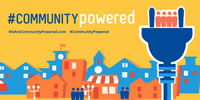Sanitary Sewer Main Rehabilitation Project
Rehabilitation – Reliable, Long-Lasting & Cost-Effective
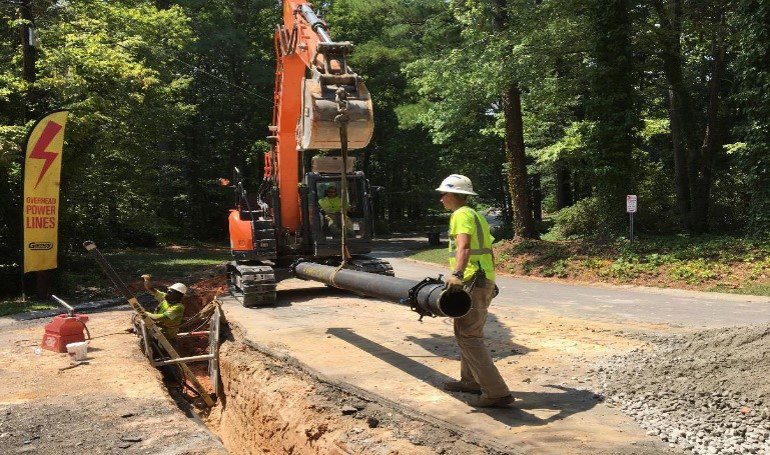
Over time, sanitary sewer mains deteriorate from the release of hydrogen sulfide gas that is a normal occurrence in sanitary sewer collection. As sewage breaks down, it releases corrosive hydrogen sulfide gas that can damage the sanitary sewer main, compromising the integrity of the main and putting it at risk for breaks and sanitary sewer overflows.
Sanitary sewer main rehabilitation is more cost-effective and less disruptive than replacing existing sanitary sewer mains. Rehab minimizes the potential for pipe failure, ensures improved sanitary sewer flows, reduces maintenance costs, and extends the life of the sanitary sewer main by 30-75 years.
PWC’s Contractor, Insituform, will be working near the following areas:
- Apr. 22: 2109 Elvira St
- Apr. 23: 929 McKimmon Rd
- Apr. 24: 957 Chester Cir
- Apr. 25: 2919 Walden Rd, 2923 Walden Rd
How are Sanitary Sewer Mains “Rehabilitated?”
Sanitary sewer main rehabilitation involves installing a liner to prevent corrosion and provide structural support to the existing sanitary sewer main.
Step 1: Installing a Temporary Sanitary Sewer System: An above-ground, temporary sanitary sewer system (also known as a bypass system) will be installed in the area to continue service during the rehab process. This pumping system requires diesel pumps to run throughout the project. These pumps are silenced to minimize noise.
Step 2: Removing the Corrosion: In order to remove the buildup, a high-pressure water jetter is dragged through the existing sanitary sewer main until the corrosion is removed.
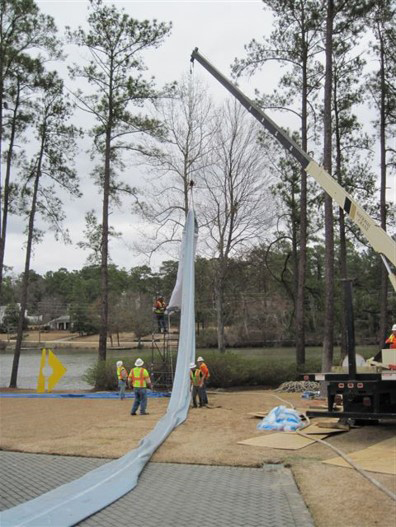
Step 3: Rehabilitating the Sanitary Sewer Main: Once the sanitary sewer main has been thoroughly cleaned, a liner is lowered into the main through sanitary sewer manholes and cured at high temperatures using high-pressure steam or hot water. The curing allows the membrane to harden and securely attach to the main walls. Once a section of rehab begins, work must continue in that location until completed. This may require work after hours (through the night).
Step 4: Inspection: After the coating has hardened, a closed-circuit camera is dragged through the main, which allows the crew to conduct an inspection to confirm a quality job. Upon completion of the rehab, the newly rehabilitated sanitary sewer main will be tested to ensure quality standards are maintained.
Step 5: Sanitary Sewer Manholes: This step is inspecting and upgrading sanitary sewer manholes that provide access to the sanitary sewer mains. Sanitary sewer manhole rehab includes cleaning the manhole with high-pressure water, repairing any voids, and applying an epoxy coating to minimize future corrosion. This work is done by a different contractor than the sanitary sewer main lining contractor.
Step 6: Sanitary Sewer Laterals: Sanitary sewer laterals – the pipe from the sanitary sewer main to the property – will also be inspected for rehabilitation. This work will be completed by a different contractor than the sanitary sewer main and manhole rehab contractors. The process for lining sanitary sewer laterals is very similar to the process for lining sanitary sewer mains. This step usually takes three to four hours to complete. It will be coordinated with the resident in advance because it is necessary to minimize water usage during this time.
Making Essential Work as Convenient as Possible
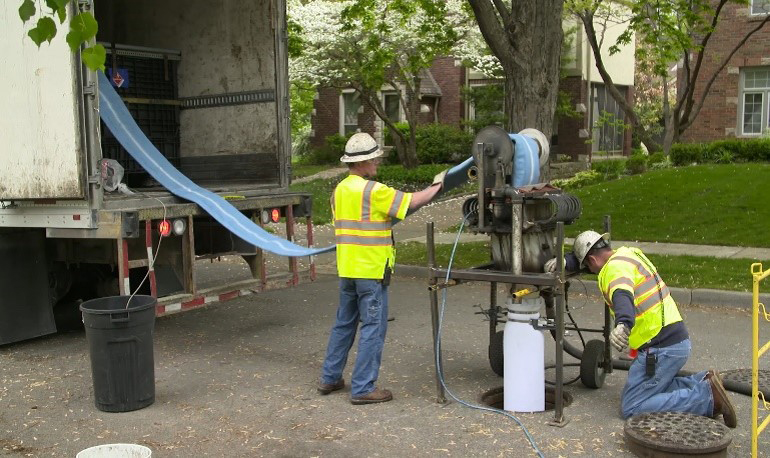
Where does the work take place? The majority of the work takes place within the utility right-of-way at the sanitary sewer main access points (manholes). Because sanitary sewer lines and manholes are often located at the back of residential property, PWC crews and contractors may need to access this area through/across the property. The contractor and PWC will work with property owners in advance when access is needed.
How long will the project take? The length of the rehabilitation process depends on the size of the area being worked on and may vary at each location. Inclement weather also impacts the length of time for a rehab project. Rehab work typically takes place Monday-Friday, 7am-6pm. However, it may be necessary for the contractor to work outside of normal business hours, including overnight, during the curing process (step 3).
During the rehab project, PWC will also complete any other maintenance necessary in that area. While this may extend the time of the project, it will allow PWC to finish the maintenance in as few trips as possible while limiting inconvenience to customers. We will keep residents informed of this throughout the process.
Who will perform the work? PWC uses qualified licensed professional rehabilitation contractors to complete this work, such as Insituform Technologies, Inc. Please contact our Water Resources Engineering Department at (910) 223-4730 to report any issues. PWC’s normal business hours are Monday-Friday, 8am-5pm.
Frequently Asked Questions
Q. Will my services be interrupted?
A. Yes. During the main and lateral lining steps there will be a brief disruption of services that should go unnoticed. There may be times when the contractor will ask customers to limit water use. This will be coordinated with you in advance.
Q. Will there be noise and/or traffic interruptions?
A. Yes, but PWC and its contractors are committed to minimizing the impact on the neighborhood. The temporary pumping system requires diesel engines to run until the project is completed. To minimize noise, the diesel engines will be silenced and placed in areas away from customers as much as possible. Also, there will be large trucks and equipment at the project area that may disrupt traffic.
Q. What equipment will be used?
A. By-pass pumps and hoses, a refrigerator truck (lining material must be refrigerated until ready for use), telehandler (telescopic forklift), a TV van and a vacuum truck are used during the rehabilitation process.
Q. Will there be any noticeable odors during this project?
A. While the liner is cured in the pipes, you may smell a styrene odor which is harmless to humans and pets.
Q. Will there be any damage to my property?
A. Prior to the project beginning, PWC and its contractors will perform thorough inspections of the property. This includes taking pictures/video of the area to document its condition so the area can be properly restored to as-good or better condition once the project is completed.
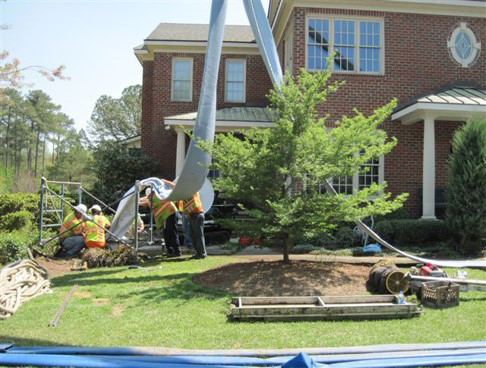
Q. How will contractors access my property?
A. Contractors will use wooden logging mats in yards and easement areas to allow equipment to move from the street to the sanitary sewer main manholes that are located on personal property. The wooden mats and equipment will remain on the property until work is completed in that area.
Q. How will I know when the contractor will cross my property?
A. The contractor will contact property owners and/or provide door hangers prior to the start of any work.
Q. Where will the contractor park their trucks and equipment? Will it stay there overnight?
A. Large vehicles and equipment may be parked overnight in the project area and on the street. If this is necessary, vehicles and equipment will be left in areas that cause the least impact to a customer’s property and neighborhood.
Q. When will property restoration or repairs be made?
A. The contractor is responsible for restoring properties to as-good or better condition and making repairs when the project is completed.
Q. Who do I contact if I have questions or need to report issues?
A. Please contact the PWC Water Resources Engineering Department at (910) 223-4730.


